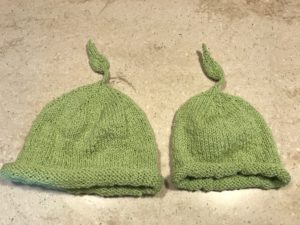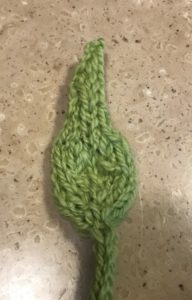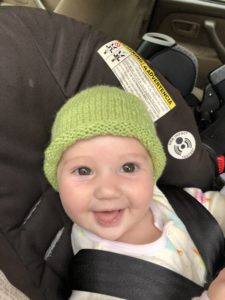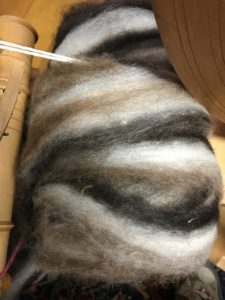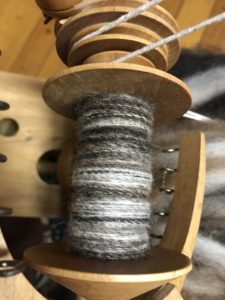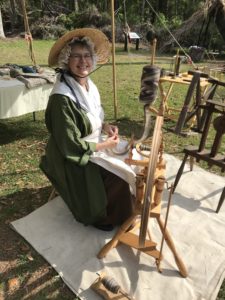 I learned how to use a spinning wheel last year at San Juan National Historical Park. When I did, I knew that I would be coming back to Fort Frederica which had a broken spinning wheel. So, when Tom and I came back to Fort Frederica this year, our first order of business was fixing the spinning wheel. I wanted to continue spinning my wheels for living history demonstrations.
I learned how to use a spinning wheel last year at San Juan National Historical Park. When I did, I knew that I would be coming back to Fort Frederica which had a broken spinning wheel. So, when Tom and I came back to Fort Frederica this year, our first order of business was fixing the spinning wheel. I wanted to continue spinning my wheels for living history demonstrations.
The flyer on the Fort Frederica wheel was broken and the legs of the wheel kept falling off. Tom took care of that with a few screws, small pieces of plywood, and some glue. Then I figured out how to use this new wheel. The wheel is much smaller than the wheel I used over the summer. This means it takes more times around to get the same amount of twist in the yarn. This is a good thing because most of my yarn from San Juan was over-twisted.
I love spinning my wheels for living history demonstrations because it draws people right it. Most people know what a spinning wheel is, but they don’t know how it works. A lot of them think the yarn goes all the way around the big wheel. They enjoy seeing the wheel in slow motion and learning what is really going on. I usually spin with a colored yarn of some sort so they can see exactly where the yarn is going. This way they don’t confuse the yarn with the drive band.
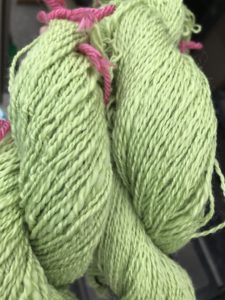 Over the last few months I have done lots of spinning demonstrations. I have spun flax and cotton, although wool is still my favorite. Wool loves to stick together with a little twist. I always spin wool in the demonstrations because I can easily talk and spin wool at the same time. I finished up a pound of dyed wool that made a lovely double ply yarn and I have been knitting “Greenleaf” baby hats from it. The color is popinjay (bright green) and is achieved by dying with lichen. The trim on the 42nd Regiment of Foot uniforms is this popinjay color.
Over the last few months I have done lots of spinning demonstrations. I have spun flax and cotton, although wool is still my favorite. Wool loves to stick together with a little twist. I always spin wool in the demonstrations because I can easily talk and spin wool at the same time. I finished up a pound of dyed wool that made a lovely double ply yarn and I have been knitting “Greenleaf” baby hats from it. The color is popinjay (bright green) and is achieved by dying with lichen. The trim on the 42nd Regiment of Foot uniforms is this popinjay color.
After spinning this wonderful yarn, I started spinning a batt of roving I bought last summer with black, brown, and white wool. The black and white are sheep wool and the brown is alpaca. This is not historically correct, but it was the only batt I had left from what I bought last summer. I have been so pleased with this wool that I decided to do a special project with it and ordered two more batts. This wool is perfect for spinning demonstrations because the colors show the twist in the yarn perfectly.
I am getting better at spinning thin and my yarns are now so fine that it took three ply of this latest yarn to make a medium weight yarn. It isn’t even as thick as worsted yarn. I have to be careful that I don’t start spinning it even thinner because I need lots of yarn for my special project.
I am enjoying spinning my wheels so much that Tom and I have set aside a couple of days in Ohio for a trip to the Woolery. A wheel of my own own might be in the future and you can be sure I will tell you all about it.

